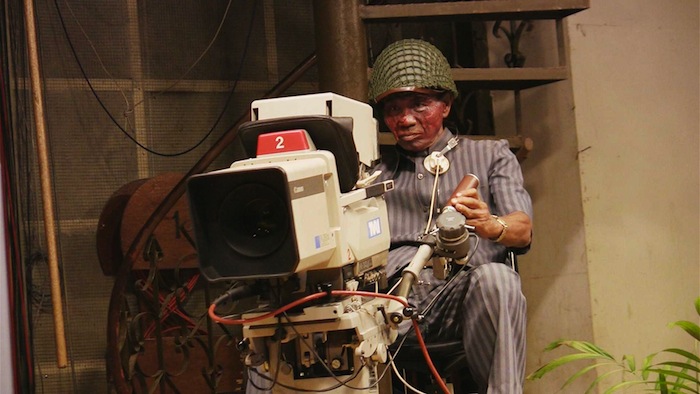I wasn’t prepared. With everything I had heard about The Act of Killing, I had a clear expectation of what was about to happen. I knew it was about a mass murderer who executed the Indonesian genocide of the 1960’s, I knew that he was making a movie re-enacting his killings, I knew it was nominated for an Oscar, and I knew that this was probably a poor choice for a lazy Saturday afternoon film session. This arsenal of facts wasn’t enough. You can never be prepared to watch The Act of Killing.
I would be doing a disservice to write a ‘review’, though I will say that Killing should be required viewing of pretty much all humans. I want to write down some of the things I learned (which others have probably already written much better), but I will reiterate this again, no one can prepare you for the emotional experience.
The film follows a handfull of executioners as they gruesomely detail how they interrogated and murdered suspected Communists in the 1965-66 military takeover. Before these government endorsed death squads began their campaign, they worked as ticket scalpers outside of theaters showing American films. The types movies that get shown internationally are more often then not action movies; the more explosions, mafia members, and machine guns, the better. Hollywood doesn’t want to bog down foreign audiences with dialogue and subtitles. Al Capone and Optimus Prime are a far more effective marketing tools (first time those two have been mentioned in the same sentence, like, ever?). It then comes as no surprise that these executioners call themselves “gangsters”, modeled after their beloved American action-heroes. The imitation doesn’t stop with semantics. The gangsters modeled their murders after what the like of John Wayne and James Dean were doing on set. The main subject of the documentary, Anwar Congo, admits that his preferred killing method, strangling with wire, was an inspiration from his favorite mafia movies. Sometimes they would invade a village and decide what style of killing they should try today. Should they one-up the American movies about Nazis? Or wipe out this village like a spaghetti Western?
When confronted on the crimes they committed, the gangsters were unconcerned with being held responsible. For one, they are supported in full by the Indonesian government (which, in a way, makes the Indonesian genocide of 2.5 million people far worse that the Holocaust; no one is out their still tolerating a Nazi government). They also cite the US invasion of Iraq and the genocide of American Indians as instances where the US has gotten away with murder. If the great US of A can do it, why can’t poor old me? War crimes are written by the victors. They won.
The two most visible aspects of the US, our culture, which glorifies violence, and our politics, which justifies it, undoubtedly played a hand in the initiation and continued justification of Indonesian genocide. The world really does look up to the United States. Are we the hero, or the villain?
(A final thought. I was pretty conflicted feeling sorry for Anwar Congo. He brutally killed 1,000 people, after all. But by the end of the film, haunted by nightmares, crying over finally understanding how his victims felt, and getting physically ill but the methods he used, I just can’t help but feel some sympathy. We’ve built an evil archetype of what this person should be. But he too is a human, surely manipulated and molded into a killer. Perhaps that is Killing‘s greatest success: the reality that all humans deserve compassion. And if we dole it out sooner rather than later, the world would be a much better place.)
